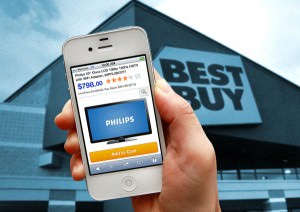by Rafi Mohammed | June 3, 2013 - Harvard Business Review
Change is an arduous process. Whenever I have to make a big change in my life, I tend to go through three phases. First, I simply wish ("somehow it will happen"). When that doesn't work, I'll look for a quick Hail Mary fix. (Sadly, those specially formulated seaweed pills didn't help me lose 1 to 2 pounds a day). Finally, still stuck in the same situation, I realize that I have to confront the challenge and strategize to make things happen.
Brick and mortar stores have been muddling through similar stages in dealing with the emergence of low-priced web retailers. The facts are incontrovertible: due to lower costs, web retailers can profitably sell products more cheaply than their physical store — and with a few clicks, it's often more convenient for customers to buy online.
When first challenged, brick and mortar stores responded with a nebulous rebuttal of "we'll offer better service" as a counterweight to their price premiums. That hasn't worked very well. Next some retailers have tried a Hail Mary tactic: "We'll match the best price you can find on the Internet." The logic here is that without the price-match guarantee, the retailer was going to lose the sale, so sales gained by this policy are incremental revenue (which results in gross profit as long as the price at least covers merchandise cost). The downside is customers become trained to play the game of checking prices on the Internet first, which has negative long term effects — you can't make money when more and more of your customers start paying incremental prices.
The allure of cheap web prices has recently blossomed due to mobile phone apps that direct users to a lower price on the same product, generally at an Internet retailer. Many of these online retailers offer free shipping and, for the moment at least, many don't charge sales tax (which at 9.25% in Chicago, for instance, adds up). These apps encourage "showrooming," the practice of customers checking out merchandise in physical stores and then purchasing at a discount on the web.
Brick and mortar retailers need to realize that selling the same products as established web retailers do, even with... Read the complete article







